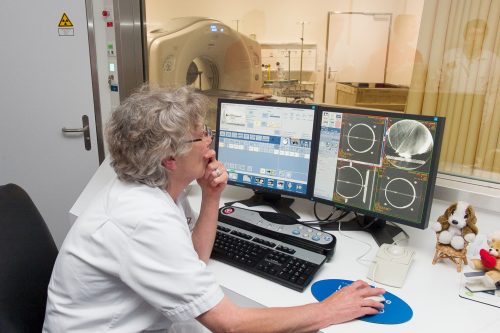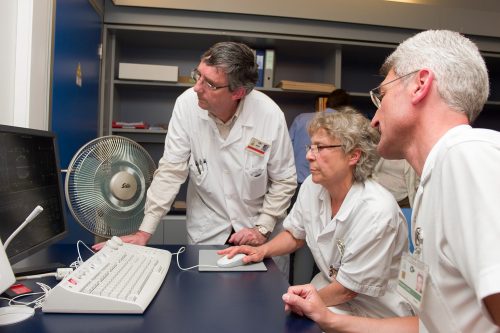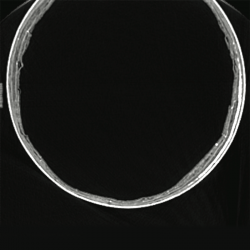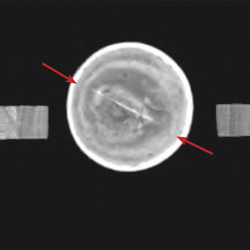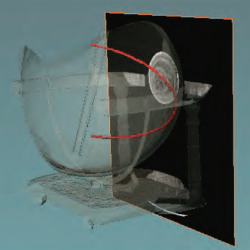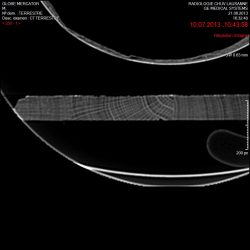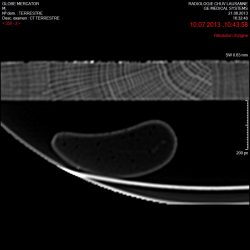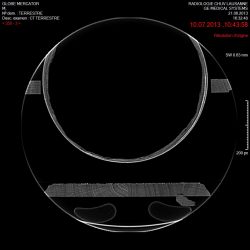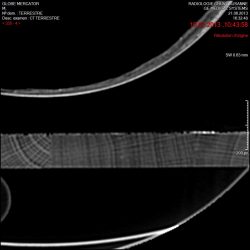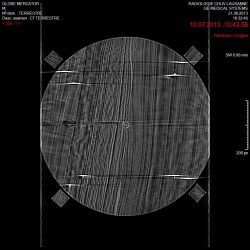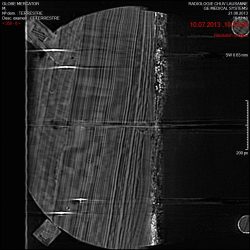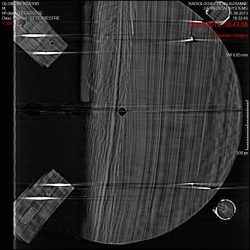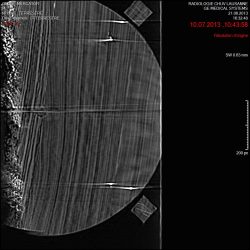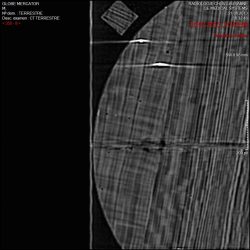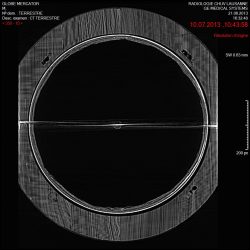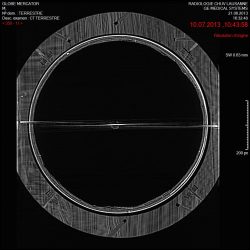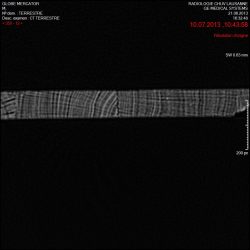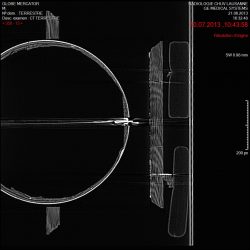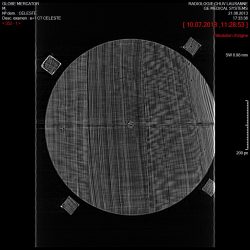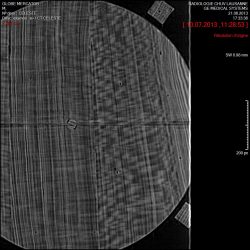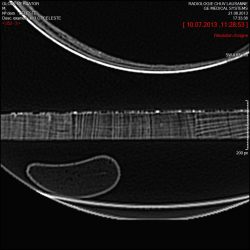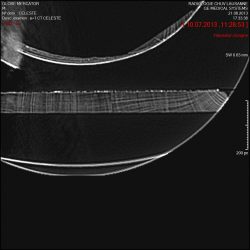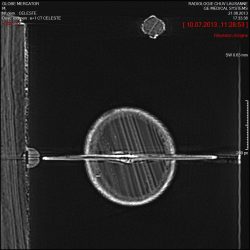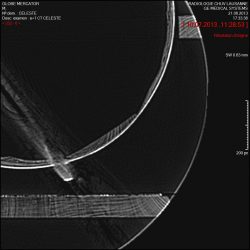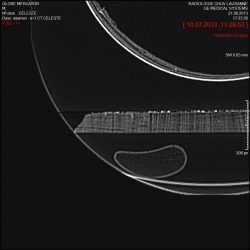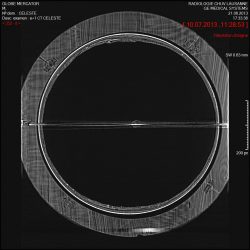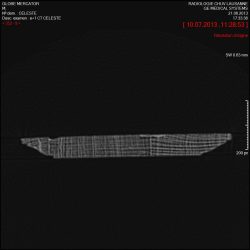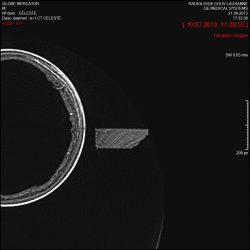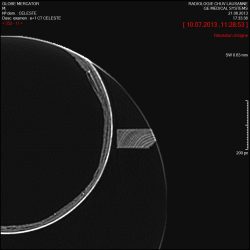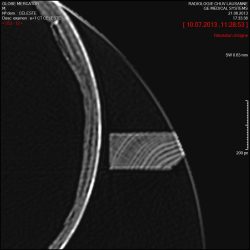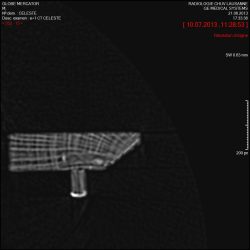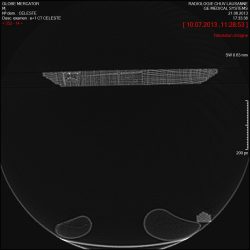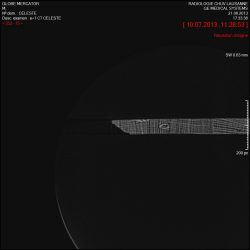CT scan of the structure
Prof Reto Meuli and his team used computer tomodensitometry to make a series of 578 images of the terrestrial globe and 572 of the celestial globe. This scan of inert objects was a first for the Radiodiagnostics and Interventional Radiology department.
The images were made to better understand the inner structure of the spheres and prepare for their restoration. In a later stage they would also be used by the Swiss Institute for Art Research in Zurich (SIK|ISEA) to create a 3D simulation of the spheres.
- CT scan through the shell, slightly towards the outer edge. The sphere is composed of numerous layers, which are difficult to differentiate and tend to shred in places. The outer layers (chalk-paste preparatory layers) are denser than the inner layers, which are probably made of cardboard. © SIK|ISEA report
- CT scan of a section nearly tangential to the sphere. The white background is full as the section is completely within the shell. The light line indicates the joint between the two hemispheres. © SIK|ISEA
- Transparent 3D modelling combined with a CT scan of a cross-section (black plate) almost tangential to the sphere. The red line shows where the two hemispheres are joined. © SIK|ISEA
On the other hand, the images that were processed with a view to analysing the origin of the wood of the stands in greater detail turned out to be unusable at the West Swiss Laboratory of Dendrochronology in Moudon. The scanner’s resolution was not suited to inert subjects such as globes.
Tomodensitometry revealed that the inner structure of the globes comprises the following components:
- a metal cross-shaft (axis)
- a hollow sphere made of two hemispheres
- hemispheres which are themselves composed of multiple layers but overall not thick at all
Find out more
- Les globes de Mercator de l’Université de Lausanne. Observations matérielles. Constat d’état. Rapport de conservation-restauration : The Mercator globes of the University of Lausanne. Material observations. Condition report. Report on conservation-restoration Workshop and laboratory of the Swiss Institute for Art Research SIK|ISEA, Ref. No. 141110 0002: 01/02, October 2015, Margaux Genton, Zurich.
- Inner construction of the spheres : X-rays, computer tomodensitometry (CT) scans and 3D modelling of the resulting images help to better understand how the spheres were made.
